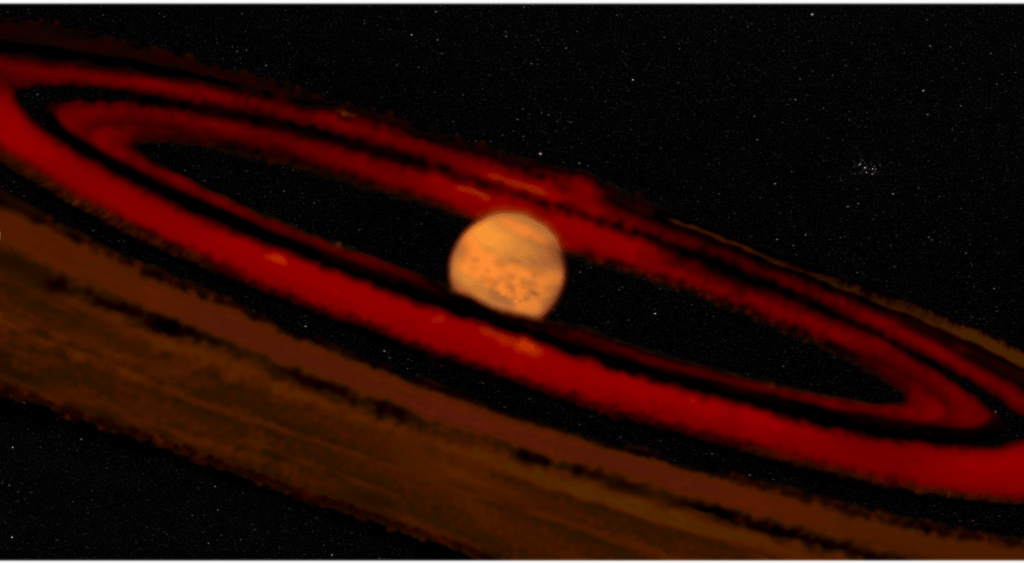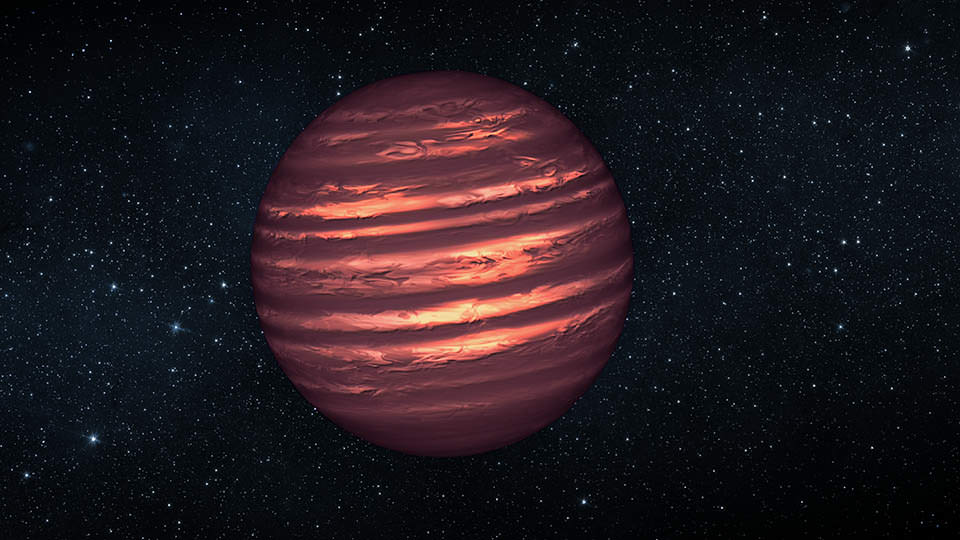When you launch humanity’s most powerful telescope, you expect results. The JWST has delivered excellent results by detecting ancient galaxies, identifying chemicals in exoplanet atmospheres, and peering into star-forming regions with more detail and clarity than any other telescope.
But every time a new telescope is about to enter service, astronomers tell us they’re excited not only about the expected results but also about the surprising results. And like other telescopes, the JWST has also delivered some surprises. While going about its business, the JWST has discovered 21 brown dwarfs.
Brown dwarfs are ‘in between’ objects. They’re sometimes referred to as ‘failed stars.’ They’re more massive than a gas giant, but less massive than a star. They never grew massive enough to trigger hydrogen fusion, the hallmark of a main sequence star.

Brown dwarfs might not seem very interesting. They’re not planets, and they’re not stars. But they’re part of nature, so they fit into the grand scheme of things somehow.
There are scientific reasons to want to learn more about them. “Selecting and characterizing these sources is vital for exploring the stellar initial mass function, understanding binary stellar evolution, and for increasing the census of stars around which potentially habitable planets may lie,” the authors of a new paper explain.
The paper is “Brown Dwarf Candidates in the JADES and CEERS Extragalactic Surveys,” and it’s available on the pre-press site arxiv.org. The lead author is Kevin Hainline, an Assistant Research Professor at Steward Observatory.
Brown dwarfs emit most of their light in the infrared, which the JWST specializes in sensing. But brown dwarfs are still difficult to detect, even for the mighty JWST. The 21 new brown dwarfs were found in data from two different surveys performed by the JWST that weren’t focused on brown dwarfs: JADES and CEERS.

JADES is the JWST Advanced Deep Extragalactic Survey, and CEERS is the Cosmic Evolution Early Release Science Survey. Both surveys are focused on distant, ancient galaxies, one of the JWST’s primary science goals. The new brown dwarfs were hidden in all their data.
These findings are important because of the location of the brown dwarfs. Most of the brown dwarfs we know about are in our stellar neighbourhood, because that’s where they’re easiest to see. But that’s a problem because when astronomers want to study something, they need a good, representative sample. They can’t draw any robust conclusions from a sample that’s all from one region of a galaxy.
“It is vital to expand on these samples, as brown dwarf stars at these distances help us understand the history of star formation in the Milky Way,” the authors write. Most of the 21 newly discovered brown dwarfs are in the Milky Way’s thick disk and halo. They’re between between 0.1 – 4.2 kpc., about 360 light-years to 13,700 light-years away.
Some of the results of this research show how much we have yet to learn about brown dwarfs. Our lack of knowledge shouldn’t come as a surprise. Brown dwarfs were first theorized to exist in the 1960s, but the first unambiguous detections weren’t until the mid-1990s. Astrophysicists are still figuring out where they fit in.
The locations of some of the brown dwarfs, especially the ones in the galactic halo, are at odds with what shape we think galaxies take. “While the majority of the sources are in the thick disk, we do find four sources that are potentially in the Milky Way halo,” the researchers write. “These sources are poorly fit with galaxy template models.” Their atmospheric spectra also aren’t a good fit with current models.

The team of researchers found these brown dwarfs in just the first year of data from both JADES and CEERS. So they will likely find more in the future, especially since this work shows how different JWST filters make the brown dwarfs discoverable. But the real fun might begin in the future. “These sources provide an exciting opportunity for follow-up observations with targeted JWST NIRSpec spectroscopy, considering their positions within the Milky Way,” the authors explain.
Only recently, a study in the Astrophysical Journal Letters presented the very first targeted observations of a brown dwarf with the JWST. Its title is “The First JWST Spectral Energy Distribution of a Y Dwarf.” (Brown dwarfs are of spectral types M, L, T, and Y.) Those observations presented some results that conflicted with theory. “This source presented a challenge to theoretical models, demonstrating the importance of increasing the number of these sources explored spectroscopically,” the authors write. So it’s critical to examine more brown dwarfs with the JWST’s NIRSpec and MIRI instruments.
Brown dwarfs are still elusive targets. They’re very faint and very low-mass compared to main sequence stars. Some can be as large as 80 times more massive than Jupiter, even though they’re all about the same radius as Jupiter. That’s tiny for a star. However, finding more of them and studying them in greater detail is critical to understanding how stars and planets form. Fortunately, astronomers are about to find many more of them and will begin to fill in the gaps in their knowledge.
These 21 brown dwarfs were found in surveys that are extragalactic. Those surveys are designed to detect objects outside the Milky Way and to avoid stellar contamination. That’s led us to a happy accident.
“While extragalactic deep fields are designed to point outside the plane of our galaxy to minimize stellar contamination, the usage of JWST deep observations to collect these sources has implications for the population of objects outside of the thick disk, which may be among the most metal-poor and oldest stars at these temperatures in the galaxy,” the paper states.
There are a host of unanswered questions surrounding brown dwarfs. When one forms, it forms in a disk just like any other star. It’s reasonable to assume that planets form in the disk just like around other stars. But a brown dwarf’s disk has much less mass than the disk around other stars, as well as having much smaller radii. That should favour the formation of terrestrial planets like Earth rather than gas giants. But only observations can conclude if that’s the case.

Brown dwarfs are neither stars nor planets, and their evolution could be very strange. Astrophysicists think that as a brown dwarf cools, about 100 million to 500 million years after formation, strange things happen in its atmosphere. It’s possible that dusty clouds of quartz and other minerals could form.
The authors of this paper are clearly looking forward to what might be a coming glut of brown dwarf detections. Some estimates say there are between 25 billion and 100 billion brown dwarfs in the Milky Way. We’re only in the early days of completing a census of brown dwarfs, and as astronomers detect more and more of them and subject them to study, we’ll understand where they fit in nature.
“We expect that the large bounty of brown dwarf candidates found over the next several years will shed light on the history of star and planet formation in our galaxy.”

